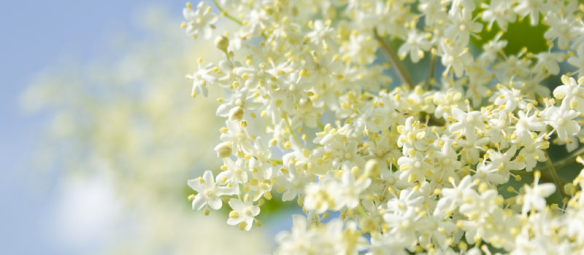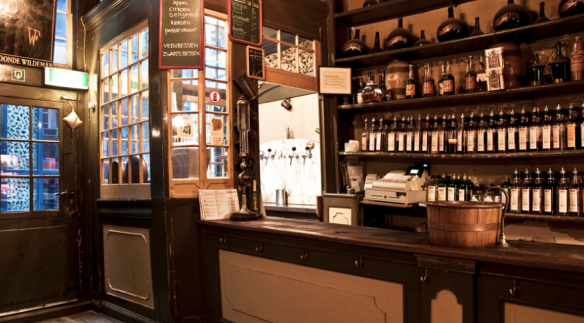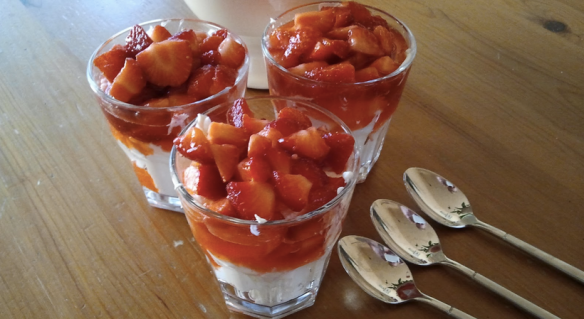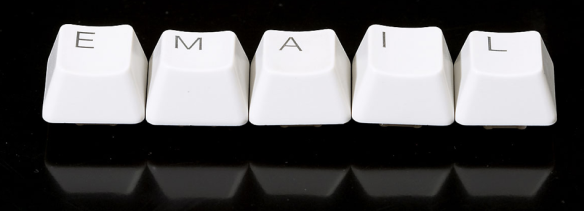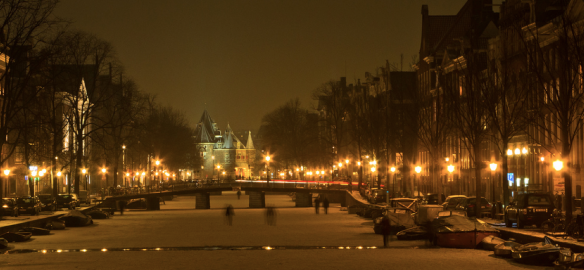We’re closing in on what we’re calling a proper heat wave here in The Netherlands. Arguing about what constitutes a real heat wave aside, we’re drinking liters and liters of elder blossom lemonade last two weeks, a perfect drink to quench our thirst with.
We made a big batch of elder blossom syrup the other day and although all elder blossom has disappeared in favor of soon-to-be elder berries by now I didn’t want to keep our recipe from you.
Elder blossom can be found anywhere here in The Netherlands, in parks, alongside roads and bike lanes to mention a few places. Also, the flower is quite unique so you can’t miss it. We got ours from the Amsterdamse Bos / Forest.
Having harvested quite a bit (we took two large shopping bags), I put everything in a large pot and put in water just enough to make sure all blossom is under if pressed a bit. We made sure the blossom stayed under by putting a weight on top of it and left it there for 24 hours or so.
Next, we strained everything using a large sieve.
The next step involved adding sugar and heating it. We put little less than a kilo of (organic) sugar per liter of fluid, we don’t like things too sweet (in total we added some 5.5kg of sugar on about 7 liters of fluid). Next, we brought the whole thing to a boil (adding sugar in batches helped making dissolving it a lot easier) and boiled it for 20 minutes.
Next, we let the whole thing cool, added some lemon (two, cut up in pieces) and some citric acid and brought the whole things to a boil again. In our case we added 6 grams of citric acid per liter. Various recipes call for 3 to as much as 20 grams per liter; depending on what you choose you can conserve it longer. It does make the syrups more sour of course. Also, we could have used lemon instead of pure citric acid, but would have had to add way more lemon to achieve the same effect.
With the substance brought to a boil, we filled carefully cleaned bottles almost to the top and put these in another pot with boiling water (cap closed), so that sterilization was complete.
Sure it was a bit of work (I’m estimating about 1 hour of harvesting and 3 to 4 hours of preparation, cooking and cleaning work). The beauty for me is though, the elder blossom grows in the wild and we didn’t need a whole lot else to give us a year of elder blossom syrup.
Now only if this heat wave wouldn’t last so long and only if the bottles aren’t such nice gifts to friends and family, we would still have our whole batch… We’re started with 20 half liter bottles and our down to 6 now, in only four weeks :(.
The blooming season of elder berry plant usually starts in May and runs until as late as mid-July, depending on temperatures, rainfall, et cetera. Get the flower when they’re fully open and white. The plants don’t only grow in The Netherlands, it’s pretty much everywhere!
P.s. the extra supplies we needed (bottles, caps, citric acid) we obtained from the beer/wine supply shop in Almere, called Brouwmarkt. Bottles like these go for €1,95 including cap but cheaper version are also available.

